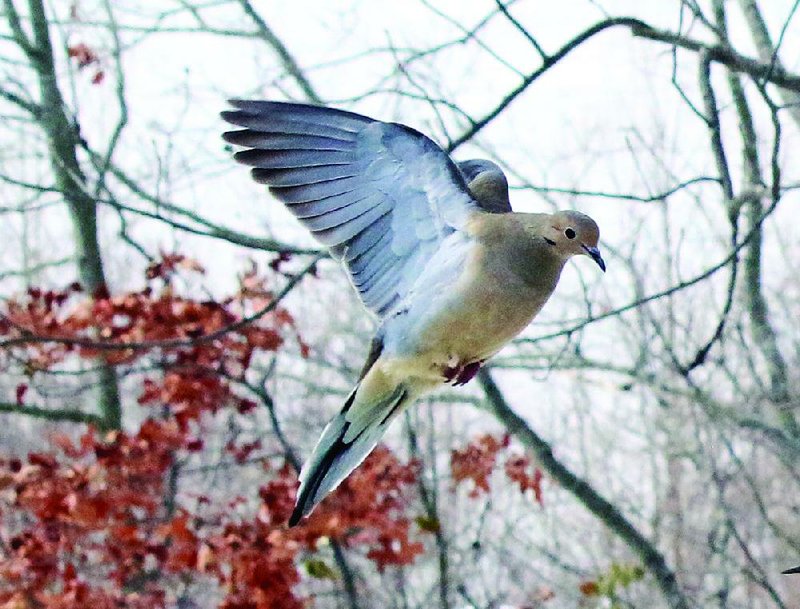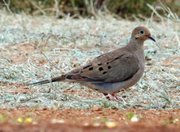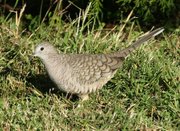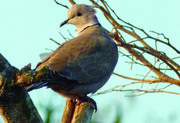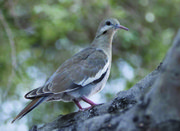There is a Ukrainian folk tale about a little girl who, on the first cold morning of winter, found a nearly frozen dove huddling in snow. She took it indoors to warm and feed.
Later she went back outside and found hundreds more doves, so many that she enlisted her grandfather, other children and the village priest to help her bring them all indoors.
By the middle of winter, every cottage, barn and even the church were filled with rescued doves.
The doves remained indoors for a few months. As frosty winter began to thaw, the birds flew to the windows as if they wanted to go out. So the priest and the girl encouraged everyone to open windows and doors to let the birds escape.
Early on Easter morning, the villagers found beautifully decorated colored eggs in the newly emerging grass where the cold and almost lifeless doves had been lifted from the snow.
"The birds have given us an Easter gift in exchange for sheltering them through the winter," explained the priest. "Each egg is different. Each one is precious in its own way. So is every creature in the eyes of God."
This children's story explains the origins of pysanky and paska. Pysanky is an ancient Slavic custom of coloring eggs in spring, while paska are dinner rolls folded to look like doves.
Not only in Ukraine, but across many nations, cultures and religions, doves symbolize safety, tranquility and peace.
The dove as a symbol is pervasive, but doves themselves are nearly ubiquitous. They live on every continent except Antarctica.
RELATED ARTICLE
http://www.arkansas…">Familiar feathers found all around
The online collaborative Encyclopedia of Life lists 308 species of doves, all of them in the group ornithologists call Columbidae. This family includes doves and pigeons.
The terms "dove" and "pigeon" can be used interchangeably, but "pigeon" is more frequently used to refer to larger columbids and "dove" to refer to smaller ones.
North America has 11 species of doves; Arkansas has six (before the passenger pigeon became extinct, the state had seven).
"No other bird has had such close links with man, nor been useful to him in so many ways," Jean Hansell, author and illustrator of Doves and Dovecotes (Millstream Books, 1988) wrote in her essay "The Pigeon in History." "Over the centuries ... it has served him as symbol, sacrifice, source of food and, not least, as a messenger, both sacred and secular."
Doves have rightly earned their reputation for gentleness and nonaggression. They
are sometimes cited as the first of all wild creatures to be domesticated, though that domestication occurred so long ago there is scant evidence to verify the claim. They adapt so easily to humans that it is not hard to believe that they tamed themselves.
The dove's docile behavior, unlike some other birds, is such that when threatened it will flutter its wings on the ground and feign injury, the bird version of "turning the other cheek."
Dovish behavior stands in stark contrast to the familiar mockingbird, which will attack tormentors, pecking and scratching with its feet.
Or consider the jungle fowl, ancestor to the domestic chicken, which, when set upon, will flog an aggressor before rising up to slash it with sharp spurs on its legs. The aggressive natures of these fowl and their descendant chickens gave people the idea of pitting them against one another in the pseudo sport of cockfighting.
Doves are stout-bodied birds with short necks and small, slender bills. They feed on seeds, fruits and plants.
They come in many sizes, colors and plumage patterns. Doves frequently have distinctively colored lohres -- patches of unfeathered skin around the face or eyes.
Doves waddle as they walk.
FAMILY LIFE
They build flimsy nests of sticks on broad tree limbs, ledges or on the ground -- depending on their species. Both parents care for the young, which are called "squabs."
Unlike other birds, pigeons and doves of both sexes produce "crop milk" as food for their squabs. This "milk" is not produced in mammary glands, as it is among mammals but is secreted in the lining of the bird's crop.
The crop is a pouch in the gullet (esophagus). It prepares food for digestion. The "milk" is not fluid like mammalian milk. It's a thick suspension of cells that slough off the lining of the crop and are high in protein and fat.
MOURNING DOVE
The most commonly seen dove in Arkansas is the mourning dove.
It can be easily identified as it perches on powerlines by its sharply pointed tail, and when seen up close by subtle shades of rose and lavender in its brown plumage.
The name "mourning" comes from the soft, plaintive, cooing song.
Some people mistakenly think the bird's name is "morning dove" because the cooing frequently is heard shortly after sunrise. I hear it sing even more often at sunset and have considered calling it "evening dove." Many species of birds sing more at the beginning and end of the day to let other birds know their whereabouts.
Mourning doves can produce as many as five clutches of eggs in a summer. On a porch ledge at a Hot Springs condo, I once kept watch on a pair of doves as they raised four clutches to maturity in one summer (two or three eggs in each clutch).
ROCK PIGEON
For city folk in Arkansas, the most frequently seen bird in the Columbidae family might be the rock pigeon, also called the rock dove. This domesticated pigeon is abundant in most of the world's great cities including New York, Paris, Rome and San Francisco, where it roosts and nests in attics and on open ledges of tall buildings.
In the 1950s I remember seeing them in great numbers spreading their tails and courting each other at Fifth and Main streets in downtown Little Rock and on the lawns outside the public library and the old Boy's Club. But today, not so much.
Pigeon populations are so large in some cities that they are considered a nuisance or health hazard because of their droppings. Measures have been taken to reduce their numbers by scaring them away, destroying their nestings, and placing spikes on their roosting spaces. Some cities, Little Rock included, have tried to control rock dove numbers by reintroducing peregrine falcons to prey upon the birds.
EURASIAN COLLARED DOVE
The Eurasian collared dove is abundant in Arkansas, though it is not native to North America. According to the Cornell Lab of Ornithology, this relative of the mourning dove arrived in the United States after a few of them were introduced to the Bahamas in the 1970s. From there, they made their way to Florida by the 1980s and subsequently colonized most of North America.
In Arkansas they live in urban and suburban areas and in rural areas around barns and silos where grain spills.
They are a lighter color and a bit larger than the mourning dove, and their tail is rounded. The voice quality of the Eurasian dove sounds similar to a mourning dove, but the rhythm of its cooing is different.
LESS OFTEN SEEN DOVES
Three other doves are listed on the current Arkansas Audubon Society Field List of birds: the white-winged dove, the Inca dove and the common ground dove.
These three birds are more rare in these parts than the mourning dove, Eurasian dove and rock pigeon.
• The white-winged dove is not frequently seen in Arkansas, but shows up regularly on the Christmas Bird Count in Fort Smith and occasionally in the westernmost tier of Arkansas counties. It is identified by the stark white outline of feathers on the leading edge of each wing. These are stocky birds with squared tail feathers, long and thin bills and small heads.
• The slim Inca dove is 7 1/2 inches long and most easily identified by the scaled appearance of its feathers. These birds show up from time to time in Arkansas near bird feeders, but the natural range of the species is centered in Mexico and south Texas. I have seen them in Dermott, Mount Ida and Texarkana.
• The common ground dove is not so common in the Natural State. It is the smallest of all doves sometimes seen here. This sparrow-size dove has dusty plumage so as to blend in with the soil where it forages for seeds. It nests on the ground, in a low bush or stump. Once it takes flight, you can see that the wings are reddish brown. That's not obvious while the bird's on the ground.
A couple of generations ago it had much more suitable habitat than it does today, but Cornell continues to lists its conservation status as "least concern."
Jerry Butler writes about Arkansas birds and the people who enjoy them. He welcomes stories and comments at
jerrysharon.butler@gmail.com
ActiveStyle on 04/10/2017
